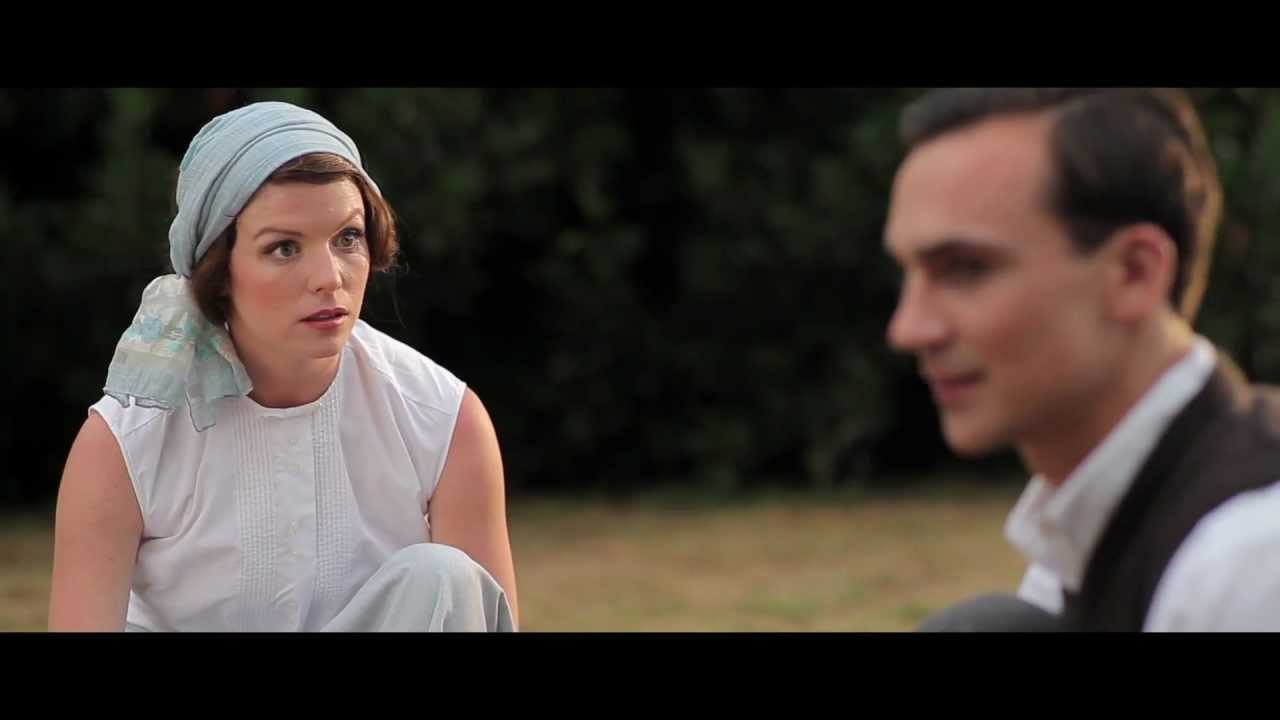By Chlotrudis Independent Film Society
Rating: 4 cats
Director: Sloane U'ren
Starring: Edward Halsted | Hannah Carson | James Greene | Patrick Godfrey | Sam Harrison | Sean Hart

Country: united_kingdom
Year: 2013
Running time: 101
IMDB: http://www.imdb.com/title/tt1703231/
Jason says: “As much as I found the festival describing DIMENSIONS: A LINE, A LOOP, A TANGLE OF THREADS (to give it its full title) with ‘Imagine a sci-fi film on PBS’ Masterpiece Theatre’ to be a bit too glibly ‘X meets Y’, there’s no denying that it is a very proper little English period science fiction story. Though there may in fact be less to it than meets the eye, it’s handsomely mounted enough to be a real pleasure.
“We start in 1921 – ‘one of many’, as a subtitle informs us – watching three children play: Stephen (Sam Harrison) and Conrad (George Thomas), cousins who are more like brothers and now living together, and Victoria (Hannah Carson), the next-door neighbor who is mutually smitten with Stephen. A strange old Professor (Patrick Godfrey) drops in on the garden party and delights them with talk of time travel and other dimensions, but that will, unfortunately, be what the week is remembered for fifteen years later. In 1936, Stephen (Henry Lloyd-Hughes) is still living with his mother (Camilla Rutherford); he’s a brilliant theoretical physicist obsessed with building a time machine even though his theories suggest, with ninety-nine percent certainty, that changing the past is impossible. He’s aided at first by Conrad (Sean Hart), with the pair later joined by Annie (Olivia Llewellyn), who attended one of Stephen’s lectures and may perhaps have grown interested in more than just the structure of spacetime.
“It’s interesting that writer Antony Neely (through Stephen) implies not just a ‘many worlds’ cosmology for Dimensions, but the extreme one where every possible binary decision is made both ways (perhaps even at the quantum level), because the implication is not just that you can’t change the past, but that free will itself is an illusion. This is done early, and sets the tone for the rest of the movie – it won’t be a story of the mechanics of getting a specific result; rather, it will be a story of paths that cannot be left – a tragedy of unavoidable obsession.
“This would work a bit better if Neely and director Sloane U’Ren gave the inevitability a bit of a harder sell. As well as the ‘tangle of threads’ model serves them, it does come from the mouth of a character with mental health issues, and is one of a number of issues that get mentioned but not really explored. The love triangle that forms at the center of the film is occasionally frustrating for some of the same reasons – we’re shown actual chemistry between Annie and Conrad only to see the characters give the other pairing more weight even though it’s an obvious disaster. And yet, nobody thinks to give Stephen the ‘actual present girl who likes you’ speech or advise Annie on the likelihood of her affection being fully returned. Then there’s this long segment where Stephen practices navigating a rope sculpture more-or-less blindfolded, which is pretty, but never really convinces the audience of its usefulness.
“And yet, things work much more than not, thanks in large part to the cast that the filmmakers have put together, starting with the child actors in the opening. They could easily be too precious, affected, or modern, but they instead turn out to be believably of their time while also demonstrating that kids are basically kids, no matter what era they come from. Later on, Henry Lloyd-Hughes and Sean Hart are not just easy to believe as the grown-up versions of the same people, but do a commendable job of creating men defined in large part by their guilt distinct and sympathetic in addition, even when they are not at their best. Camilla Rutherford bridges the two time periods nicely, a young and idealized mother in 1921 who becomes a bit more eccentric in her middle age. Olivia Llewellyn is a delight as the plucky student who captures both cousin’s fancy – as much as the character’s job is
likely-unrewarded devotion, she gives Annie enough personality to make her something more than pathetic. And Patrick Godfrey makes a fine Professor, effortlessly able to be the focus of some early scenes without dominating them.
“It’s a handsomely mounted production, too – director Sloane U’Ren also serves as production designer, which is a job she’s had on much larger movies, including one entry in the Harry Potter series. Her husband Neely wrote the score as well as the script, and both are credited as producers (while likely being more hands-on than just selling their house to finance the picture). This compact creative team lets them exercise pretty tight control over everything the audience sees and hears, and they do a good job all around, creating a movie that looks great without being gaudy. It’s nicely paced, and unlike many films of its type, it has a handle on its scale, seldom feeling like it’s telling a story too large or small for its ideas or means.
“The mix between period drama and science-fiction can be a contentious one, often feeling like overkill or trying to add two audiences but only pleasing their intersection. Dimensions has a few issues, but it does a very nice job of using its unusual setting to play with unusual ideas while not allowing them to run away with things. 4 cats
“Seen 18 February 2012 in Somerville Theatre Micro-cinema (Boston Sci-Fi Film Festival, video)”
